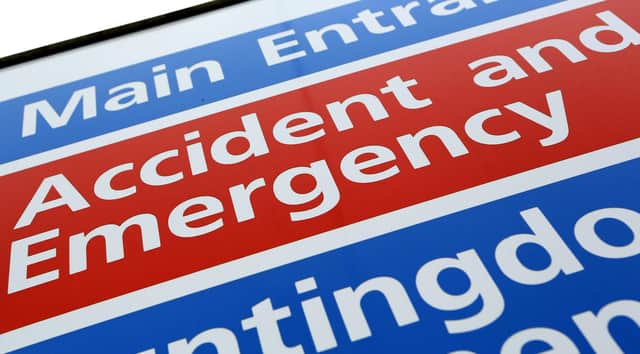Rise in visits to speciality departments at the Liverpool Women's Trust


More patients visited speciality departments at the Liverpool Women's Trust last month, with demand rising above the levels seen over the same period last year.
NHS England figures show 1,413 patients visited speciality departments at Liverpool Women's NHS Foundation Trust in March.
Advertisement
Hide AdAdvertisement
Hide AdThat was a rise of 11% on the 1,274 visits recorded during February, and 16% more than the 1,218 patients seen in March 2022.
The figures show attendances were above the levels seen two years ago – in March 2021, there were 1,159 visits to speciality departments run by the Liverpool Women's Trust.
Jessica Morris, Nuffield Trust fellow, said the data depicts a "troublesome situation for NHS recovery" as junior doctor strikes cause disruptions this week.
She said: "There is also a risk that the people who need treatment most urgently are not being effectively prioritised and this could lead to worsening conditions and a greater need for care further down the line.”
Advertisement
Hide AdAdvertisement
Hide AdAcross England, A&E departments received 2.2 million visits last month.
That was an increase of 13% compared to February, but a similar number as seen during March 2022.
The number of people waiting more than 12 hours in A&E departments from a decision to admit to actually being admitted stood at 39,671 in March, up 13% from 34,976 in January but down 27% from a record 54,532 in December 2022.
Saoirse Mallorie, senior analyst at The King’s Fund think tank said: "Today’s figures also demonstrate that accident and emergency departments continue to be under real strain, with over 10% of people spending more than 12 hours in A&E in February."
Advertisement
Hide AdAdvertisement
Hide AdShe added: "Bringing down waiting times and making it easier for people to access treatment will need a long term approach from politicians and national leaders. This needs to include the publication and funding of the much-awaited NHS workforce plan and a renewed focus on prevention and social care."
Professor Stephen Powis, NHS national medical director for England, said: “The last few months have been demanding for the NHS as record numbers of patients have come forward for care on top of hugely disruptive strike action.
Mr Powis said the data shows demand on services is not relenting with A&E attendances and ambulance call-outs at the highest level so far this year.
“So while there is no let-up for services – and with almost 48 hours of strike action still to go – it remains as vital as ever that the public continue to come forward for care when they need it, using 999 in an emergency and using 111 online and making use of the expertise of pharmacies, GPs and community services for less urgent needs,” he said.
At Liverpool Women's NHS Foundation Trust:
In March:
- There were 120 booked appointments, up from 89 in February
- 84% of arrivals were seen within four hours, against an NHS target of 95%